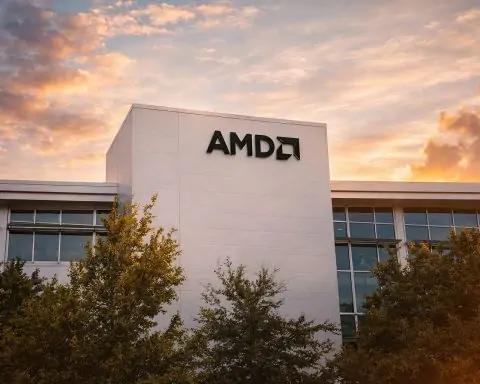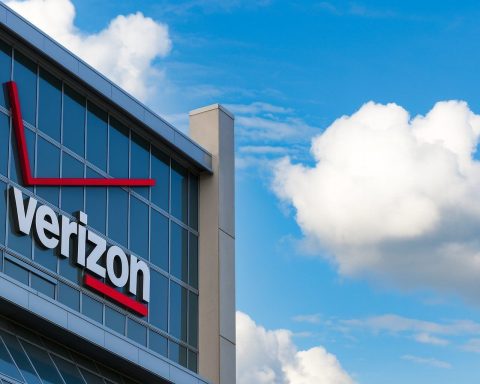- On June 12, 2025 Ericsson unveiled Ericsson On-Demand, a fully managed 5G Core-as-a-Service delivered as SaaS with Google Cloud, using GKE and AI-powered operations with pay-as-you-go pricing.
- On June 30, 2025 the U.S. DOJ approved HPE’s $14 billion acquisition of Juniper Networks, conditioning divestment of Aruba Instant On WLAN and licensing out Juniper’s Mist platform source code to a third party and foreseeing a 2025 close.
- In July 2025 Deutsche Telekom formed a new internal cloud division focused on data sovereignty and European cloud independence.
- On July 2, 2025 Latvia’s LMT announced a collaboration with Ericsson to modernize its core network and subscriber management using cloud-native NFV-based solutions.
- ETSI’s NFV Industry Specification Group held its 49th plenary in March 2025 and, by June 2025, published a white paper on Management and Orchestration of the Telco Cloud emphasizing NFV-MANO enhancements.
- The IEEE NFV-SDN 2025 conference is scheduled for November 10–12, 2025 in Athens, with a Call for Papers deadline of June 15, 2025 covering cloud-native VNFs, automation, and AI in network management.
- ETSI released NFV Release 5, version 5.2.1 in June 2025, introducing enhanced container networking and a Telco Cloud data analytics framework.
- A coalition of 23 operators published a joint white paper in 2025 outlining NFV priorities for 5G, advocating openness and interoperability.
- Fact.MR, on June 27, 2025, projected the global NFV market to reach nearly $10 billion by 2035, up from $4.7 billion in 2024, with about a 7.1% CAGR.
- Polaris via WhaTech published in July 2025 that the NFV market was about $40 billion in 2024 and could reach $424.7 billion by 2034, implying a 26.7% CAGR from 2025 to 2034.
Network Function Virtualization (NFV) continues to transform telecom networks by replacing dedicated hardware with software-based network functions running on commodity servers. This approach underpins many 5G deployments and telco cloud initiatives, enabling greater agility and cost efficiency in network operations [1] [2]. In mid-2025, the NFV ecosystem saw significant momentum – from new industry partnerships and product launches to updated market forecasts and expert insights – all highlighting both the progress and ongoing challenges in virtualizing network infrastructure. This report compiles the major NFV-related news, forecasts, and expert commentary globally during June and July 2025, providing a comprehensive view of the latest trends.
Latest NFV News & Announcements (June–July 2025)
- Ericsson & Google Cloud Launch 5G Core-as-a-Service: One of the most significant announcements came on June 12, 2025, when Ericsson unveiled “Ericsson On-Demand,” a fully managed 5G Core network delivered as a software-as-a-service (SaaS) in partnership with Google Cloud [3]. This cloud-native core platform leverages Google Kubernetes Engine (GKE) and Google’s AI infrastructure, enabling rapid deployment of core network functions “in minutes” with elastic scaling and pay-as-you-go pricing [4] [5]. Ericsson On-Demand promises telecom-grade reliability combined with public cloud flexibility for operators, especially suited for smaller or trial core deployments [6] [7]. Ericsson manages the service end-to-end with 24/7 SRE teams and AI-assisted operations for fast troubleshooting [8]. Google Cloud’s VP of Networking, Muninder Sambi, emphasized that this partnership lets CSPs “rapidly deploy 5G core and tap into new revenue streams,” framing it as not just a technology shift but a business agility play [9]. Industry observers noted the significance of this move – unlike prior “hybrid” telco cloud efforts, Ericsson’s offering with Google is seen as perhaps “the most genuinely public cloud” implementation of a 5G core to date, marking Ericsson’s first major core network foray onto a hyperscaler’s infrastructure [10] [11]. (By contrast, rival Nokia has taken a different path, partnering with cloud vendors but often sticking to its own cloud-native infrastructure or working via hybrid models [12].) This Ericsson–Google Cloud deal underscores a broader trend of telecom vendors and cloud providers teaming up to offer on-demand, cloud-hosted network functions.
- HPE’s $14B Acquisition of Juniper Approved: In late June 2025, Hewlett Packard Enterprise (HPE) cleared a major hurdle in its bid to acquire networking vendor Juniper Networks for $14 billion. On June 30, the U.S. Department of Justice (DOJ) gave approval for the deal after HPE agreed to certain conditions to preserve competition [13] [14]. Specifically, HPE will divest its Aruba “Instant On” wireless LAN business and license out Juniper’s AI-powered Mist platform source code to a third party, addressing DOJ concerns about concentration in the WLAN market [15] [16]. HPE’s CEO Antonio Neri highlighted the strategic rationale: combining Juniper’s data center routing/switching portfolio with HPE’s compute and storage offerings to create a robust alternative to market leader Cisco for AI-driven networking solutions [17] [18]. The acquisition – expected to close in 2025 – is poised to strengthen HPE’s position in carrier and cloud provider segments (including NFV infrastructure), as Juniper brings expertise in virtualized network functions (like its vMX router and Contrail cloud platform) and a strong telco customer base. Analysts noted the concessions will maintain competition, while HPE reiterated that the primary goal is telco and cloud market growth, not just WLAN share [19]. With this green light, HPE and Juniper’s integration will be a strategic development to watch, as it could reshape the vendor landscape for NFV and cloud networking solutions.
- Telecom Operators Double-Down on Telco Cloud: Telecom carriers in various regions made moves to advance their NFV-based telco cloud strategies. For example, Deutsche Telekom (DT) in Germany established a new internal cloud division in July 2025 with a core focus on data sovereignty and European cloud independence [20]. The unit will drive DT’s network virtualization and cloud initiatives while ensuring compliance with local data regulations – reflecting a broader industry emphasis on sovereign cloud infrastructure for critical network functions. In Eastern Europe, Latvia’s leading operator LMT announced a collaboration with Ericsson (July 2, 2025) to modernize LMT’s core network and subscriber management systems using cloud-native and NFV-based solutions [21]. This modernization is expected to enhance LMT’s 5G capabilities and automate services via NFV/SDN. These examples illustrate how operators are investing in next-gen network cores and telco clouds to support 5G, often balancing global vendor technology with local requirements. The commitment to NFV is also evident in operator-led community efforts – for instance, carriers like Orange, Deutsche Telekom and Swisscom are actively fostering a cloud-native telecom developer community (as seen at KubeCon Europe’s Telco Day in April 2025), signaling their dedication to making telco cloud “sing” in practice [22] [23]. While progress can seem slow due to legacy infrastructure and complex requirements, operators’ focus on virtualization and cloudification has never been stronger.
- NFV Industry Events and Standards: The NFV community continues to refine standards and share best practices. ETSI’s NFV Industry Specification Group held its 49th plenary in March 2025, and by June the group published a new white paper on “Management and Orchestration of the Telco Cloud” – reaffirming the pivotal role of NFV-MANO (Management and Network Orchestration) in efficient telco cloud deployments [24]. The white paper emphasizes that NFV-MANO, enhanced with new features, remains essential for stable and sustainable telco cloud ecosystems [25]. On the horizon, the IEEE NFV-SDN 2025 international conference (scheduled for 10–12 November 2025 in Athens) is expected to convene researchers and practitioners to discuss the latest NFV advancements [26] [27]. The Call for Papers deadline (June 15, 2025) drew contributions on topics like cloud-native VNFs, automation, and AI in network management. Such forums illustrate the lively exchange of ideas in the NFV domain, bridging academic research with real-world implementations. Industry collaboration is also evident in open-source and standards groups: for example, the ONAP and OPNFV initiatives continue to drive an open NFV ecosystem, and the MEF (Metro Ethernet Forum) recently published guidance on integrating Carrier Ethernet with NFV to encourage innovative services [28]. Overall, mid-2025 has shown a mix of competitive moves, partnerships, and community efforts that underscore NFV’s central role in telecom network evolution.
Market Forecasts, Trends, and Analysis
The market outlook for NFV remains robust, though estimates vary widely. A June 27, 2025 analysis by Fact.MR projected the global NFV market to reach nearly USD 10 billion by 2035, up from about USD 4.7 billion in 2024 (a relatively modest ~7.1% CAGR) [29]. This forecast highlights cloud-native network infrastructure adoption as a key growth driver and positions NFV as a “transformative force” for cost-effective and scalable networks [30]. In contrast, a Polaris Market Research study (reported July 1, 2025) paints a far more aggressive picture – estimating the NFV market at $40 billion in 2024 and projecting it to soar to $424.7 billion by 2034, which implies a 26.7% CAGR over the 2025–2034 period [31]. This bullish scenario likely encompasses a broad definition of NFV (including cloud-native functions, services at the edge, etc.), foreseeing NFV becoming ubiquitous across telecom and enterprise networks. Other analysts fall somewhere between these extremes: Mordor Intelligence, for instance, estimates the NFV market at ~$37 billion in 2025 on track to ~$132 billion by 2030 (CAGR ~28.8%) [32], while IDC previously forecasted telecom NFV software alone reaching $29 billion in 2025 (up from $7.5 billion in 2020) [33]. The divergence in numbers reflects different scopes (some include hardware or adjacent tech) and uncertainty about how rapidly operators will virtualize their networks. Nevertheless, all forecasts concur that NFV adoption is rising steadily, fueled by the global rollout of 5G, the push toward cloud-native 5G cores, and demand for more flexible network services.
To summarize a few key market projections:
| Source (Date) | 2024 Market Size | Forecast | CAGR |
|---|---|---|---|
| Fact.MR (Jun 2025) | $4.7 billion (2024) [34] | $9.99 billion by 2035 [35] | ~7.1% (2025–2035) [36] |
| Polaris (Polaris via WhaTech, Jul 2025) | $40.0 billion (2024) [37] | $424.7 billion by 2034 [38] | 26.7% (2025–2034) [39] |
| Mordor Intelligence (2025) | ~$37 billion (2025) [40] | $131.8 billion by 2030 [41] | ~28.8% (2025–2030) [42] |
| IDC (2021) | $7.5 billion (2020) [43] | $29 billion by 2025 [44] | n/a (implied ~30% 2020–25) |
Despite the disparity in absolute figures, the direction is clear – NFV is in a growth phase, set to expand significantly as telcos and enterprises virtualize more network functions.
Key Trends driving this growth include:
- 5G Rollouts and Network Slicing: The ongoing global deployment of 5G is a major catalyst for NFV adoption [45] [46]. 5G’s requirements for ultra-low latency, massive device connectivity, and flexible service creation have pushed operators to virtualize core network functions and implement network slicing. NFV provides the programmable, scalable network fabric needed to spin up 5G core components on demand and tailor networks for different use cases. For example, NFV enables a 5G Standalone (SA) core to be deployed on cloud infrastructure, as seen in Ericsson’s new SaaS core offering [47]. Operators view NFV-based 5G cores as critical for offering dedicated slices for enterprises, supporting IoT, and enabling advanced services like VR/AR over mobile networks [48] [49].
- Cloud-Native Functions (CNFs) & Containerization: There is a clear industry shift from traditional virtual machines to cloud-native network functions deployed in containers. Telcos are accelerating the move to cloud-native architectures (often using Kubernetes orchestration) for greater agility [50]. CNFs promise better portability and faster instantiation than legacy VNFs. Many NFV solution vendors have refactored their software to be Kubernetes-compatible [51]. This trend was evident at KubeCon Europe 2025, where operators like DT and Orange showcased trials of running core network workloads as containers on Kubernetes [52] [53]. However, challenges remain: industry experts note that 5G architectures don’t always map cleanly to cloud paradigms (e.g., 3GPP functions like NRF or SCP can seem redundant next to cloud service meshes) [54]. Nonetheless, mastering CNFs is a top priority, with initiatives like Cloud Native Telco Taskforces and open-source projects (e.g., Nephio for Kubernetes-based NFV orchestration) gaining traction.
- Edge Computing and MEC Integration: NFV is increasingly converging with edge computing to meet latency-sensitive application needs. By virtualizing network functions at the network edge (such as user plane functions, content caches, or IoT gateways), operators can push processing closer to end-users [55]. This enables new use cases – autonomous vehicles, smart cities, industrial IoT, AR/VR – that demand real-time response. The trend is toward distributed NFV deployments across central clouds and edge nodes. Telecom vendors are delivering uCPE (universal CPE) and edge NFV solutions to help operators deploy VNFs/CNFs in edge sites. (For instance, Telco Systems’ NFVTime platform supports white-box uCPE at customer sites or cell sites, and other vendors like Wind River and VMware offer edge cloud stacks.) By mid-2025, many carriers were trialing Multi-access Edge Computing (MEC) scenarios with virtual network functions – e.g., edge content delivery networks and private 5G cores – to reduce backhaul and improve performance [56] [57]. The NFV ecosystem now recognizes edge NFV as a key growth area, often in combination with 5G and IoT deployments.
- AI-Driven Automation and Orchestration: Artificial intelligence and machine learning are being embedded into NFV management and orchestration systems to handle complexity at scale. AI-powered NFV orchestration can automate fault detection, healing, and resource optimization in virtualized networks [58]. For example, AI-based analytics in NFV MANO can predict traffic spikes and proactively scale VNFs, or detect anomalies for security. The Fact.MR report highlighted AI/ML integration as a prominent trend improving performance and security of NFV deployments (such as using AI for real-time threat detection in virtual networks) [59] [60]. Many vendors are now touting “zero-touch automation” for NFV operations, leveraging AI for closed-loop assurance. Ericsson’s new SaaS core uses AI-assisted operations with SRE teams to minimize downtime [61]. Similarly, Juniper’s Mist (now part of HPE) exemplifies AI-driven network management that could be applied to NFV environments. The goal is to manage complex virtual networks with minimal manual intervention, something especially critical as NFV scales across core, edge, and enterprise domains.
- Open-Source Ecosystem & Interoperability: The NFV movement has strong roots in open-source collaboration. There’s growing adoption of open-source NFV platforms and components – from OpenStack (for NFV infrastructure) to ONAP (for orchestration) – to avoid vendor lock-in [62]. Industry initiatives like OPNFV (Open Platform NFV) have helped test and integrate open NFV stacks, while groups like ETSI NFV, MEF, and TM Forum push for standardized NFV APIs and interfaces. In June 2025, ETSI’s NFV group released NFV Release 5, version 5.2.1, which introduced enhancements like improved container networking and a defined Telco Cloud data analytics framework [63]. Standardization ensures that VNFs from different suppliers can interoperate on common infrastructure. Operators are increasingly insisting on multi-vendor NFV solutions, which has driven vendors to support open standards and APIs. The era of monolithic proprietary telecom gear is fading; instead, a mix-and-match ecosystem of VNFs/CNFs running on generic cloud infrastructure is becoming the norm. Notably, telecom carriers themselves have published guidelines – e.g., a coalition of 23 operators outlined NFV priorities for 5G in a joint white paper, advocating openness and interoperability [64]. In 2025, even traditionally conservative operators are contributing to open-source (for example, Vodafone’s contributions to ONAP, or Orange’s involvement in OSC – Open Source MANO). This open ecosystem is seen as key to reducing costs and accelerating innovation in NFV.
- Security and Reliability Concerns: Alongside opportunities, security remains a focal challenge for NFV. Virtualized network functions, by their software nature, expand the attack surface compared to closed proprietary appliances. Analysts warn that “virtualized networks are more susceptible to cyber threats”, so robust security – encryption, intrusion detection, secure coding – is critical [65] [66]. The telecom industry is addressing this through initiatives like NFV-specific security standards (ETSI has an NFV-SEC working group) and by integrating security functions as VNFs (virtual firewalls, DDoS protection, etc.). For example, operators are increasingly deploying vSecurity solutions: virtual firewalls, IDS/IPS, and security orchestrators that protect east-west traffic between VNFs [67]. Another aspect is reliability: telcos demand “five-nines” availability even from virtualized systems. Techniques like redundancy of VNFs, geo-diverse clouds, and automated failover are employed to meet carrier-grade reliability. ENISA (EU’s cyber agency) in 2025 analyzed NFV security in 5G, recommending best practices to mitigate vulnerabilities in virtualization layers [68]. As NFV scales, ensuring trust and resilience in software-based networks is paramount – and indeed a precondition for telcos to virtualize mission-critical services. The continued focus on “carrier-grade” NFV solutions (often referenced by vendors like Ericsson and Nokia) underscores that performance and security cannot be sacrificed in the move to cloud-like networks.
- Private 5G and Enterprise NFV: Beyond public networks, NFV is making inroads into enterprise and private 5G deployments. Industries such as manufacturing, healthcare, logistics, and energy are rolling out private LTE/5G networks to enable localized connectivity for IoT and automation. NFV plays a crucial role here by allowing the core network and edge functions of a private 5G system to run on standard IT servers at the enterprise site [69] [70]. Operators and vendors are offering turnkey virtualized core solutions for enterprises (sometimes branded as “network in a box” or edge core), which can be more easily managed and scaled thanks to NFV. The opportunity is sizable: Fact.MR notes that the proliferation of IoT devices (billions globally) is creating massive demand for scalable networks, which NFV is well suited to support [71]. By virtualizing network functions, enterprises can avoid heavy investment in proprietary telco hardware yet still obtain carrier-grade capabilities (like low-latency URLLC or network slicing for their specific needs) [72]. Telecom operators are also leveraging NFV to offer Network-as-a-Service and managed SD-WAN/SASE services to enterprises – deploying virtual routers, VPNs, and security functions on-demand for business customers [73]. This enterprise pivot is expanding the NFV market beyond just telecom operators to include cloud providers and system integrators serving enterprise networking needs.
Expert Commentary and Industry Perspectives
Industry leaders and analysts provided valuable insights during this period, underlining both optimism and realism about NFV’s trajectory. Executives at the forefront of NFV transformations stress agility and simplicity. For example, Eric Parsons, Ericsson’s VP Head of Emerging Segments for Cloud Software, said of the new On-Demand core service: “[It] is more than a product, it’s an enabler of ambition… It gives [CTOs] the agility to outpace market change, the confidence to innovate without compromise, and the clarity to seize opportunities that were previously out of reach.” [74] This reflects a sentiment that NFV and cloud-native approaches can free operators from traditional constraints, allowing rapid innovation in service offerings. Likewise, Google Cloud’s Muninder Sambi framed their Ericsson partnership as unlocking new business models for operators, not just a technical evolution [75].
Analysts, while encouraged by progress, also point out the remaining hurdles. Heavy Reading principal analyst Gabriel Brown noted in an April 2025 commentary that many underlying challenges of telco cloud persist even 10+ years after NFV’s inception [76] [77]. Telco networks still have fundamentally different requirements and architectures compared to the cloud domain, making it non-trivial to port telecom workloads seamlessly onto cloud platforms [78]. Brown highlighted that bridging the world of “optics, radios and routers” with cloud computing takes time and effort, and some misalignment (like 5G core concepts versus cloud-native design patterns) is still being ironed out [79]. However, he struck a hopeful tone about the emergence of a committed cloud-native telco developer community. At the KubeCon Cloud Native Telco Day (Amsterdam, 2025), the presence of major European operators (DT, Orange, Swisscom) and vendors (Red Hat, Nokia, Oracle, Google, Ericsson) collaborating on real solutions indicated that “the sector is approaching a threshold that will lead to a new mode of working” for telco cloud [80] [81]. Brown’s takeaway was that while outsiders may view telco cloud progress as “disastrously slow,” insiders see that the “commitment and community to make it work is falling into place.” [82] [83] This encapsulates the industry’s resolve: NFV’s promise is too valuable to abandon, and through collective effort, the tough problems (interoperability, operational complexity, cultural shifts) are gradually being solved.
Other subject-matter experts have commented on specific aspects: security researchers emphasize incorporating security from day one in NFV deployments (e.g., zero-trust principles and continuous monitoring for VNFs), and standards bodies like ETSI are guiding this via spec updates. Cloud providers’ executives often highlight how their platforms can bring global scale and AI capabilities to telecom networks, as seen in Google’s involvement and also similar pitches from AWS and Microsoft Azure in other contexts. Telecom operator CTOs frequently underscore how NFV and SDN help them achieve “service agility” – for instance, enabling them to launch new services or network slices in weeks rather than months. An example is Vodafone’s CTO Johan Wibergh, who (in an earlier statement) noted that a common telco cloud platform allowed Vodafone to deploy new network functions 40% faster and at half the cost in its European networks [84]. Such real-world outcomes bolster the case for NFV investments.
Finally, market research commentary (like Fact.MR’s report) provides a balanced view of drivers vs. challenges. Analysts from Fact.MR pointed to the global 5G rollout and multi-cloud adoption as strong drivers, while candidly acknowledging hurdles such as the complexity of migrating from legacy systems and the steep learning curve and integration costs for operators embracing NFV [85] [86]. The report also identifies emerging opportunities – for instance, in underserved regions (Asia-Pacific, Africa, Latin America) NFV offers a cost-effective way to build out connectivity, and in vertical industries the rise of private networks is a new frontier [87]. These insights suggest that while NFV is not a trivial undertaking, its strategic importance is only increasing. As one industry saying goes, “The telco of the future is a software company.” In June–July 2025 we saw many operators and vendors inching closer to that vision, whether through partnerships, platform launches, or community initiatives.
Conclusion
In summary, mid-2025 has been a dynamic period for Network Function Virtualization globally. News headlines underscored the accelerating convergence of telecom and cloud: a major vendor (Ericsson) teamed with a hyperscaler to deliver network functions as-a-service [88], while an IT giant (HPE) moved to acquire a networking firm (Juniper) to bolster its telco portfolio [89]. Telecom operators advanced their NFV agendas with new cloud divisions and modernization projects, reinforcing that virtualized, software-driven networks are central to 5G-era strategy [90] [91]. On the market front, forecasts remain bullish – even the most conservative outlook sees steady growth, and optimistic scenarios envision an NFV market well into the hundreds of billions within a decade [92] [93]. Key technology trends like cloud-native VNFs, edge NFV, AI automation, and open-source collaboration are shaping how NFV is implemented, ensuring that it evolves to meet real-world needs from the network core to the edge [94] [95].
Crucially, expert commentary during this period reflects a mix of realism and confidence: realism about the challenges of transforming legacy networks, but confidence that the industry is coalescing around solutions and best practices. The formation of a cloud-native telco developer community and the emphasis on standards/interoperability indicate a maturing ecosystem [96] [97]. As of mid-2025, NFV is no longer a nascent concept but rather a foundational pillar of modern telecom networks – underpinning live 5G services, enterprise offerings, and even telco operations themselves. Executives speak of newfound agility and “zero-touch” possibilities, while analysts note that the hard work of integration and training is ongoing [98] [99]. The net takeaway is that NFV’s global journey is on an upward trajectory, with June and July 2025 marking significant milestones. Stakeholders across the board – operators, vendors, cloud providers, and standards bodies – are pushing NFV technology into mainstream adoption, setting the stage for the next wave of innovation (such as 6G and AI-driven networks) to be built on a virtualized, software-defined foundation [100] [101]. The coming months and years will likely bring further convergence of NFV with cloud and edge paradigms, but the developments in this period confirm that NFV is delivering tangible value today and is poised for even greater impact tomorrow.
Sources: Recent news articles, press releases, and research reports from June–July 2025, including Fact.MR [102] [103], WhaTech/Polaris [104] [105], Light Reading [106] [107], SDxCentral [108] [109], ETSI [110] [111], and industry analyst commentary [112] [113], as cited above.
References
1. world.einnews.com, 2. world.einnews.com, 3. www.prnewswire.com, 4. www.prnewswire.com, 5. www.prnewswire.com, 6. www.prnewswire.com, 7. www.prnewswire.com, 8. www.prnewswire.com, 9. www.prnewswire.com, 10. www.lightreading.com, 11. www.lightreading.com, 12. www.lightreading.com, 13. www.sdxcentral.com, 14. www.sdxcentral.com, 15. www.sdxcentral.com, 16. www.sdxcentral.com, 17. www.sdxcentral.com, 18. www.sdxcentral.com, 19. www.sdxcentral.com, 20. www.telecoms.com, 21. www.telecoms.com, 22. www.lightreading.com, 23. www.lightreading.com, 24. www.etsi.org, 25. www.etsi.org, 26. www.comsoc.org, 27. www.comsoc.org, 28. www.capacitymedia.com, 29. world.einnews.com, 30. world.einnews.com, 31. www.whatech.com, 32. www.mordorintelligence.com, 33. telecomlead.com, 34. 0e190a550a8c4c8c4b93-fcd009c875a5577fd4fe2f5b7e3bf4eb.ssl.cf2.rackcdn.com, 35. world.einnews.com, 36. world.einnews.com, 37. www.whatech.com, 38. www.whatech.com, 39. www.whatech.com, 40. www.mordorintelligence.com, 41. www.mordorintelligence.com, 42. www.mordorintelligence.com, 43. telecomlead.com, 44. telecomlead.com, 45. world.einnews.com, 46. www.whatech.com, 47. www.prnewswire.com, 48. www.vodafone.com, 49. www.vodafone.com, 50. www.whatech.com, 51. www.whatech.com, 52. www.lightreading.com, 53. www.lightreading.com, 54. www.lightreading.com, 55. www.whatech.com, 56. www.whatech.com, 57. www.whatech.com, 58. www.whatech.com, 59. world.einnews.com, 60. world.einnews.com, 61. www.prnewswire.com, 62. www.whatech.com, 63. www.etsi.org, 64. www.cablelabs.com, 65. world.einnews.com, 66. world.einnews.com, 67. www.whatech.com, 68. www.enisa.europa.eu, 69. world.einnews.com, 70. www.whatech.com, 71. world.einnews.com, 72. www.whatech.com, 73. www.whatech.com, 74. www.prnewswire.com, 75. www.prnewswire.com, 76. www.lightreading.com, 77. www.lightreading.com, 78. www.lightreading.com, 79. www.lightreading.com, 80. www.lightreading.com, 81. www.lightreading.com, 82. www.lightreading.com, 83. www.lightreading.com, 84. www.vodafone.com, 85. world.einnews.com, 86. world.einnews.com, 87. world.einnews.com, 88. www.prnewswire.com, 89. www.sdxcentral.com, 90. www.telecoms.com, 91. www.telecoms.com, 92. www.whatech.com, 93. world.einnews.com, 94. www.whatech.com, 95. www.whatech.com, 96. www.lightreading.com, 97. www.whatech.com, 98. world.einnews.com, 99. www.lightreading.com, 100. www.mwrf.com, 101. www.mwrf.com, 102. world.einnews.com, 103. world.einnews.com, 104. www.whatech.com, 105. www.whatech.com, 106. www.lightreading.com, 107. www.lightreading.com, 108. www.sdxcentral.com, 109. www.sdxcentral.com, 110. www.etsi.org, 111. www.etsi.org, 112. www.lightreading.com, 113. www.lightreading.com










